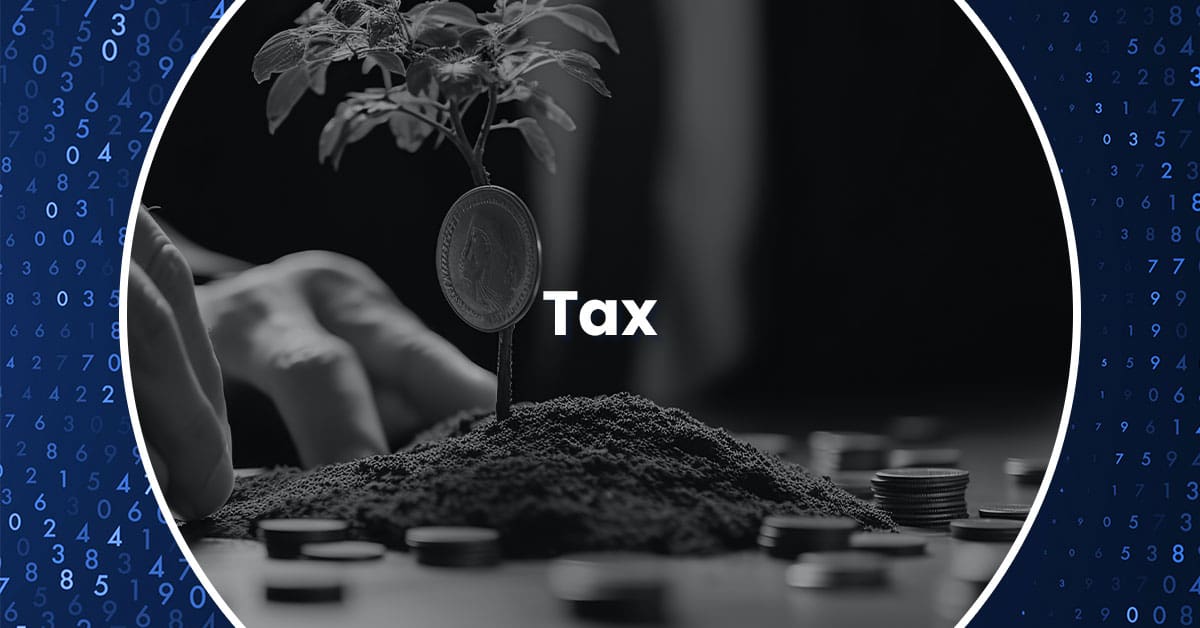As the U.S. entered 2021, many assumed that newly elected President Joe Biden along with Democratic majorities in the House and Senate would swiftly enact tax increases on both corporations and individuals to pay for the cost of proposed new infrastructure and social spending plans, potentially using the budget reconciliation process to do so. Since then, various versions of tax and spending measures have been negotiated and debated by members of Congress and the White House. As 2021 heads to a close, tax increases are still expected, but the timing and content of final changes are still not certain.
On November 5, 2021, the U.S. House of Representatives delayed voting on its version of the Build Back Better Act (H.R. 5376), a package of social spending measures funded by tax increases. The delay allows members more time to review the budget impact of the provisions in the bill. Some of the legislation’s major tax proposals, which mainly target large profitable corporations and high-income individuals, include:
- A 15% corporate alternative minimum tax on companies that report financial statement profits of over $1 billion.
- A 1% surtax on corporate stock buybacks.
- A 15% country-by-country minimum tax on foreign profits of U.S. corporations.
- A 5% surtax on individual incomes over $10 million, an additional 3% surtax on incomes over $25 million and expansion of the 3.8% Net Investment Income Tax.
At the time of writing, the House had not yet voted on the Build Back Better Act. Once the House votes, the legislation will be taken up by the Senate. If enacted in its current form, the legislation would generally be effective for taxable years beginning after December 31, 2021; however, many of the corporate and international proposals affecting businesses would apply for taxable years beginning after December 31, 2022 – i.e., they would be deferred for one year.
The information contained in this article is based on tax proposals as of November 3, 2021 and is subject to change based on final legislation. Businesses should continue to track the latest tax proposals to understand the impacts of possible new legislation, particularly when engaging in tax planning. Despite the delays and uncertainty around exactly what tax changes final legislation will contain, there are actions that businesses can consider taking to minimize their tax liabilities.
Consider tax accounting method changes and strategic tax elections
The 2017 Tax Cuts and Jobs Act (TCJA) lowered the regular corporate tax rate to 21% and eliminated the corporate alternative minimum tax beginning in 2018. The current version of the proposed Build Back Better Act would leave the 21% regular corporate tax rate unchanged but, beginning in 2023, would create a new 15% corporate alternative minimum tax on the adjusted financial statement income of corporations with such income over $1 billion. Companies with adjusted financial statement income over $1 billion, therefore, should take into account the proposed 15% corporate alternative minimum tax when considering 2021 tax planning actions that could affect future years.
Companies that want to reduce their 2021 tax liability should consider traditional tax accounting method changes, tax elections and other actions for 2021 to defer recognizing income to a later taxable year and accelerate tax deductions to an earlier taxable year, including the following:
Changing from recognizing certain advance payments (e.g., upfront payments for goods, services, gift cards, use of intellectual property, sale or license of software) in the year of receipt to recognizing a portion in the following taxable year.
- Changing from the overall accrual to the overall cash method of accounting.
- Changing from capitalizing certain prepaid expenses (e.g., insurance premiums, warranty service contracts, taxes, government permits and licenses, software maintenance) to deducting when paid using the “12-month rule.”
- Deducting eligible accrued compensation liabilities (such as bonuses and severance payments) that are paid within 2.5 months of year end.
- Accelerating deductions of liabilities such as warranty costs, rebates, allowances and product returns under the “recurring item exception.”
- Purchasing qualifying property and equipment before the end of 2021 to take advantage of the 100% bonus depreciation provisions and the Section 179 expensing rules.
- Deducting “catch-up” depreciation (including bonus depreciation, if applicable) by changing to shorter recovery periods or changing from non-depreciable to depreciable.
- Optimizing the amount of uniform capitalization costs capitalized to ending inventory, including changing to simplified methods available under Section 263A.
- Electing to fully deduct (rather than capitalize and amortize) qualifying research and experimental (R&E) expenses attributable to new R&E programs or projects that began in 2021. Similar planning may apply to the deductibility of software development costs attributable to new software projects that began in 2021. (Note that capitalization and amortization of R&E expenditures is required beginning in 2022, although the proposed Build Back Better Act would delay the effective date until after 2025).
- Electing to write-off 70% of success-based fees paid or incurred in 2021 in connection with certain acquisitive transactions under Rev. Proc. 2011-29.
- Electing the de minimis safe harbor to deduct small-dollar expenses for the acquisition or production of property that would otherwise be capitalizable under general rules.
Is “reverse” planning better for your situation?
Depending on their facts and circumstances, some businesses may instead want to accelerate taxable income into 2021 if, for example, they believe tax rates will increase in the near future or they want to optimize usage of NOLs. These businesses may want to consider “reverse” planning strategies, such as:
- Implementing a variety of “reverse” tax accounting method changes.
- Selling and leasing back appreciated property before the end of 2021, creating gain that is taxed currently offset by future deductions of lease expense, being careful that the transaction is not recharacterized as a financing transaction.
- Accelerating taxable capital gain into 2021.
- Electing out of the installment sale method for installment sales closing in 2021.
- Delaying payments of liabilities whose deduction is based on when the amount is paid, so that the payment is deductible in 2022 (e.g., paying year-end bonuses after the 2.5-month rule).
Tax accounting method changes – is a Form 3115 required and when?
Some of the opportunities listed above for changing the timing of income recognition and deductions require taxpayers to submit a request to change their method of tax accounting for the particular item of income or expense. Generally, tax accounting method change requests require taxpayers to file a Form 3115, Application for Change in Accounting Method, with the IRS under one of the following two procedures:
- The “automatic” change procedure, which requires the taxpayer to attach the Form 3115 to the timely filed (including extensions) federal tax return for the year of change and to file a separate copy of the Form 3115 with the IRS no later than the filing date of that return; or
- The “nonautomatic” change procedure, which applies when a change is not listed as automatic and requires the Form 3115 (including a more robust discussion of the legal authorities than an automatic Form 3115 would include) to be filed with the IRS National Office during the year of change along with an IRS user fee. Calendar year taxpayers that want to make a nonautomatic change for the 2021 taxable year should be cognizant of the accelerated December 31, 2021 due date for filing Form 3115.
Note: Only certain changes may be implemented without a Form 3115.
Write-off bad debts and worthless stock
Given the economic challenges brought on by the COVID-19 pandemic, businesses should evaluate whether losses may be claimed on their 2021 returns related to worthless assets such as receivables, property, 80% owned subsidiaries or other investments.
- Bad debts can be wholly or partially written off for tax purposes. A partial write-off requires a conforming reduction of the debt on the books of the taxpayer; a complete write-off requires demonstration that the debt is wholly uncollectible as of the end of the year.
- Losses related to worthless, damaged or abandoned property can generate ordinary losses for specific assets.
- Businesses should consider claiming losses for investments in insolvent subsidiaries that are at least 80% owned and for certain investments in insolvent entities taxed as partnerships (also see Partnerships and S corporations, below).
- Certain losses attributable to COVID-19 may be eligible for an election under Section 165(i) to be claimed on the preceding taxable year’s return, possibly reducing income and tax in the earlier year or creating an NOL that may be carried back to a year with a higher tax rate.
Maximize interest expense deductions
The TCJA significantly expanded Section 163(j) to impose a limitation on business interest expense of many taxpayers, with exceptions for small businesses (those with three-year average annual gross receipts not exceeding $26 million ($27 million for 2022), electing real property trades or businesses, electing farming businesses and certain utilities.
- The deduction limit is based on 30% of adjusted taxable income. The amount of interest expense that exceeds the limitation is carried over indefinitely.
- Beginning with 2022 taxable years, taxpayers will no longer be permitted to add back deductions for depreciation, amortization and depletion in arriving at adjusted taxable income (the principal component of the limitation).
- The Build Back Better Act proposes to modify the rules with respect to business interest expense paid or incurred by partnerships and S corporations (see Partnerships and S corporations, below).
Maximize tax benefits of NOLs
Net operating losses (NOLs) are valuable assets that can reduce taxes owed during profitable years, thus generating a positive cash flow impact for taxpayers. Businesses should make sure they maximize the tax benefits of their NOLs.
- Make sure the business has filed carryback claims for all permitted NOL carrybacks. The CARES Act allows taxpayers with losses to carry those losses back up to five years when the tax rates were higher. Taxpayers can still file for “tentative” refunds of NOLs originating in 2020 within 12 months from the end of the taxable year (by December 31, 2021 for calendar year filers) and can file refund claims for 2018 or 2019 NOL carrybacks on timely filed amended returns.
- Corporations should monitor their equity movements to avoid a Section 382 ownership change that could limit annual NOL deductions.
- Losses of pass-throughs entities must meet certain requirements to be deductible at the partner or S corporation owner level (see Partnerships and S corporations, below).
Defer tax on capital gains
Tax planning for capital gains should consider not only current and future tax rates, but also the potential deferral period, short and long-term cash needs, possible alternative uses of funds and other factors.
Noncorporate shareholders are eligible for exclusion of gain on dispositions of Qualified Small Business Stock (QSBS). The Build Back Better Act would limit the gain exclusion to 50% for sales or exchanges of QSBS occurring after September 13, 2021 for high-income individuals, subject to a binding contract exception. For other sales, businesses should consider potential long-term deferral strategies, including:
- Reinvesting capital gains in Qualified Opportunity Zones.
- Reinvesting proceeds from sales of real property in other “like-kind” real property.
- Selling shares of a privately held company to an Employee Stock Ownership Plan.
Businesses engaging in reverse planning strategies (see Is “reverse” planning better for your situation? above) may instead want to move capital gain income into 2021 by accelerating transactions (if feasible) or, for installment sales, electing out of the installment method.
Claim available tax credits
The U.S. offers a variety of tax credits and other incentives to encourage employment and investment, often in targeted industries or areas such as innovation and technology, renewable energy and low-income or distressed communities. Many states and localities also offer tax incentives. Businesses should make sure they are claiming all available tax credits for 2021 and begin exploring new tax credit opportunities for 2022.
- The Employee Retention Credit (ERC) is a refundable payroll tax credit for qualifying employers that have been significantly impacted by COVID-19. Employers that received a Paycheck Protection Program (PPP) loan can claim the ERC but the same wages cannot be used for both programs. The Infrastructure Investment and Jobs Act signed by President Biden on November 15, 2021, retroactively ends the ERC on September 30, 2021, for most employers.
- Businesses that incur expenses related to qualified research and development (R&D) activities are eligible for the federal R&D credit.
- Taxpayers that reinvest capital gains in Qualified Opportunity Zones may be able to defer the federal tax due on the capital gains. An additional 10% gain exclusion also may apply if the investment is made by December 31, 2021. The investment must be made within a certain period after the disposition giving rise to the gain.
- The New Markets Tax Credit Program provides federally funded tax credits for approved investments in low-income communities that are made through certified “Community Development Entities.”
- Other incentives for employers include the Work Opportunity Tax Credit, the Federal Empowerment Zone Credit, the Indian Employment Credit and credits for paid family and medical leave (FMLA).
- There are several federal tax benefits available for investments to promote energy efficiency and sustainability initiatives. In addition, the Build Back Better Act proposes to extend and enhance certain green energy credits as well as introduce a variety of new incentives. The proposals also would introduce the ability for taxpayers to elect cash payments in lieu of certain credits and impose prevailing wage and apprenticeship requirements in the determination of certain credit amounts.
Partnerships and S corporations
The Build Back Better Act contains various tax proposals that would affect partnerships, S corporations and their owners. Planning opportunities and other considerations for these taxpayers include the following:
- Taxpayers with unused passive activity losses attributable to partnership or S corporation interests may want to consider disposing of the interest to utilize the loss in 2021.
- Taxpayers other than corporations may be entitled to a deduction of up to 20% of their qualified business income (within certain limitations based on the taxpayer’s taxable income, whether the taxpayer is engaged in a service-type trade or business, the amount of W-2 wages paid by the business and the unadjusted basis of certain property held by the business). Planning opportunities may be available to maximize this deduction.
- Certain requirements must be met for losses of pass-through entities to be deductible by a partner or S corporation shareholder. In addition, an individual’s excess business losses are subject to overall limitations. There may be steps that pass-through owners can take before the end of 2021 to maximize their loss deductions. The Build Back Better Act would make the excess business loss limitation permanent (the limitation is currently scheduled to expire for taxable years beginning on or after January 1, 2026) and change the manner in which the carryover of excess business losses may be used in subsequent years.
- Under current rules, the abandonment or worthlessness of a partnership interest may generate an ordinary deduction (instead of a capital loss) in cases where no partnership liabilities are allocated to the interest. Under the Build Back Better Act, the abandonment or worthlessness of a partnership interest would generate a capital loss regardless of partnership liability allocations, effective for taxable years beginning after December 31, 2021. Taxpayers should consider abandonment of a partnership interest in 2021 to be able to claim an ordinary deduction.
- Following enactment of the TCJA, deductibility of expenses incurred by investment funds are treated as “investment expenses”—and therefore are limited at the individual investor level— if the fund does not operate an active trade or business (i.e., if the fund’s only activities are investment activities). To avoid the investment expense limitation, consideration should be given as to whether a particular fund’s activities are so closely connected to the operations of its portfolio companies that the fund itself should be viewed as operating an active trade or business.
- Under current rules, gains allocated to carried interests in investment funds are treated as long-term capital gains only if the investment property has been held for more than three years. Investment funds should consider holding the property for more than three years prior to sale to qualify for reduced long-term capital gains rates. Although the Build Back Better Act currently does not propose changes to the carried interest rules, an earlier draft of the bill would have extended the current three-year property holding period to five years. Additionally, there are multiple bills in the Senate that, if enacted, would seek to tax all carry allocations at ordinary income rates.
- Under the Build Back Better Act, essentially all pass-through income of high-income owners that is not subject to self-employment tax would be subject to the 3.8% Net Investment Income Tax (NIIT). This means that pass-through income and gains on sales of assets allocable to partnership and S corporation owners would incur NIIT, even if the owner actively participates in the business. Additionally, taxpayers that currently utilize a state law limited partnership to avoid self-employment taxes on the distributive shares of active “limited partners” would instead be subject to the 3.8% NIIT. If enacted, this proposal would be effective for taxable years beginning after December 31, 2021. Taxpayers should consider accelerating income and planned dispositions of business assets into 2021 to avoid the possible additional tax.
- The Build Back Better Act proposes to modify the rules with respect to business interest expense incurred by partnerships and S corporations effective for taxable years beginning after December 31, 2022. Under the proposed bill, the Section 163(j) limitation with respect to business interest expense would be applied at the partner and S corporation shareholder level. Currently, the business interest expense limitation is applied at the entity level (also see Maximize interest expense deductions, above).
- Various states have enacted PTE tax elections that seek a workaround to the federal personal income tax limitation on the deduction of state taxes for individual owners of pass-through entities. See State pass-through entity tax elections, below.
Planning for international operations
The Build Back Better Act proposes substantial changes to the existing U.S. international taxation of non-U.S. income beginning as early as 2022. These changes include, but are not limited to, the following:
- Imposing additional interest expense limitations on international financial reporting groups.
- Modifying the rules for global intangible low-taxed income (GILTI), including calculating GILTI and the corresponding foreign tax credits (FTCs) on a country-by-country basis, allowing country specific NOL carryforwards for one taxable year and reducing the QBAI reduction to 5%.
- Modifying the existing FTC rules for all remaining categories to be calculated on a country-by-country basis.
- Modifying the rules for Subpart F, foreign derived intangible income (FDII) and the base erosion anti-abuse tax (BEAT).
- Imposing new limits on the applicability of the Section 245A dividends received deduction (DRD) by removing the application of the DRD rules to non-controlled foreign corporations (CFCs).
- Modifying the rules under Section 250 to remove the taxable income limitation as well as reduce the GILTI and FDII deductions to 28.5% and 24.8%, respectively.
Businesses with international operations should gain an understanding of the impacts of these proposals on their tax profile by modeling the potential changes and considering opportunities to utilize the favorable aspects of the existing cross-border rules to mitigate the detrimental impacts, including:
- Considering mechanisms/methods to accelerate foreign source income (e.g., prepaying royalties) and associated foreign income taxes to maximize use of the existing FTC regime and increase current FDII benefits.
- Optimizing offshore repatriation and associated offshore treasury aspects while minimizing repatriation costs (e.g., previously taxed earnings and profits and basis amounts, withholding taxes, local reserve restrictions, Sections 965 and 245A, etc.).
- Accelerating dividends from non-CFC 10% owned foreign corporations to maximize use of the 100% DRD currently available.
- Utilizing asset step-up planning in low-taxed CFCs to utilize existing current year excess FTCs in the GILTI category for other CFCs in different jurisdictions.
- Considering legal entity restructuring to maximize the use of foreign taxes paid in jurisdictions with less than a 16% current tax rate to maximize the GILTI FTC profile of the company.
- If currently in NOLs, considering methods to defer income or accelerate deductions to minimize detrimental impacts of existing Section 250 deduction taxable income limitations in favor of the proposed changes that will allow a full Section 250 deduction without a taxable income limitation.
- In combination with the OECD Pillar One/Two advancements coupled with U.S. tax legislation, reviewing the transfer pricing and value chain structure of the organization to consider ways to adapt to such changes and minimize the future effective tax rate of the organization.
Review transfer pricing compliance
Businesses with international operations should review their cross-border transactions among affiliates for compliance with relevant country transfer pricing rules and documentation requirements. They should also ensure that actual intercompany transactions and prices are consistent with internal transfer pricing policies and intercompany agreements, as well as make sure the transactions are properly reflected in each party’s books and records and year-end tax calculations. Businesses should be able to demonstrate to tax authorities that transactions are priced on an arms-length basis and that the pricing is properly supported and documented. Penalties may be imposed for non-compliance. Areas to consider include:
- Have changes in business models, supply chains, or profitability (including changes due to the effects of COVID-19) affected arm’s length transfer pricing outcomes and support? These changes and their effects should be supported before year-end and documented contemporaneously.
- Have all cross-border transactions been identified, priced, and properly documented, including transactions resulting from merger and acquisition activities (as well as internal reorganizations)?
- Do you know which entity owns the intellectual property (IP), where it is located, and who is benefitting from it? Businesses must evaluate their IP assets — both self-developed and acquired through transactions — to ensure compliance with local country transfer pricing rules and to optimize IP management strategies.
- If transfer pricing adjustments need to be made, they should be done before year-end, and for any intercompany transactions involving the sale of tangible goods, coordinated with customs valuations.
- Multinational businesses should begin to monitor and model the potential effects of the recent agreement among OECD countries on a two-pillar framework that addresses the distribution of profits among countries and imposes a 15% global minimum tax.
Considerations for employers
Employers should consider the following issues as they close out 2021 and head into 2022:
- Employers have until the extended due date of their 2021 federal income tax return to retroactively establish a qualified retirement plan and fund the plan for 2021.
- Contributions made to a qualified retirement plan by the extended due date of the 2021 federal income tax return may be deductible for 2021; contributions made after this date are deductible for 2022.
- The amount of any PPP loan forgiveness is excluded from the federal gross income of the business, and qualifying expenses for which the loan proceeds were received are deductible.
- The CARES Act permitted employers to defer payment of the employer portion of Social Security (6.2%) payroll tax liabilities that would have been due from March 27 through December 31, 2020. Employers are reminded that half of the deferred amount must be paid by December 31, 2021 (the other half must be paid by December 31, 2022). Notice CP256-V is not required to make the required payment.
- Employers should ensure that common fringe benefits are properly included in employees’ and, if applicable, 2% S corporation shareholders’ taxable wages. Partners should not be issued W-2s.
- Publicly-traded corporations may not deduct compensation of “covered employees” — CEO, CFO, and generally the three next highest compensated executive officers — that exceeds $1 million per year. Effective for taxable years beginning after December 31, 2026, the American Rescue Plan Act of 2021 expands covered employees to include five highest-paid employees. Unlike the current rules, these five additional employees are not required to be officers.
- Generally, for calendar year accrual-basis taxpayers, accrued bonuses must be fixed and determinable by year-end and paid within 2.5 months of year-end (by March 15, 2022) for the bonus to be deductible in 2021. However, the bonus compensation must be paid before the end of 2021 if it is paid by a Personal Service Corporation to an employee-owner, by an S corporation to any employee-shareholder, or by a C corporation to a direct or indirect majority owner.
- Businesses should assess the tax impacts of their mobile workforce. Potential impacts include the establishment of a corporate tax presence in the state or foreign country where the employee works; dual tax residency for the employee; and payroll tax, benefits, and transfer pricing issues.
State and local taxes
Businesses should monitor the tax rules in the states in which they operate or make sales. Taxpayers that cross state borders—even virtually—should review state nexus and other policies to understand their compliance obligations, identify ways to minimize their state tax liabilities and eliminate any state tax exposure. The following are some of the state-specific areas taxpayers should consider when planning for their tax liabilities in 2021 and 2022:
- Does the state conform to federal tax rules (including recent federal legislation) or decouple from them? Not all states follow federal tax rules. (Note that states do not necessarily follow the federal treatment of PPP loans. See Considerations for employers, above.)
- Has the business claimed all state NOL and state tax credit carrybacks and carryforwards? Most states apply their own NOL/credit computation and carryback/forward provisions. Has the business considered how these differ from federal and the effect on its state taxable income and deductions?
- Has the business amended any federal returns? Businesses should make sure state amended returns are filed on a timely basis to report the federal changes. If a federal amended return is filed, amended state returns may still be required even there is no change to state taxable income or deductions.
- Has a state adopted economic nexus for income tax purposes, enacted NOL deduction suspensions or limitations, increased rates or suspended or eliminated some tax credit and incentive programs to deal with lack of revenues due to COVID-19 economic issues?
- The majority of states now impose single-sales factor apportionment formulas and require market-based sourcing for sales of services and licenses/sales of intangibles using disparate sourcing methodologies. Has the business recently examined whether its multistate apportionment of income is consistent with or the effect of this trend?
- Consider the state and local tax treatment of merger, acquisition and disposition transactions, and do not forget that internal reorganizations of existing structures also have state tax impacts. There are many state-specific considerations when analyzing the tax effects of transactions.
- Is the business claiming all available state and local tax credits, e.g., for research activities, employment or investment?
- For businesses selling remotely and that have been protected by P.L. 86-272 from state income taxes in the past, how is the business responding to changing state interpretations of those protections with respect to businesses engaged in internet-based activities?
- Has the business considered the state tax impacts of its mobile workforce? Most states that provided temporary nexus and/or withholding relief relating to teleworking employees lifted those orders during 2021 (also see Considerations for employers, above).
- Has the state introduced (or is it considering introducing) a tax on digital services? The definition of digital services can potentially be very broad and fact-specific. Taxpayers should understand the various state proposals and plan for potential impacts.
- Remote retailers, marketplace sellers, and marketplace facilitators (i.e., marketplace providers) should be sure they are in compliance with state sales and use tax laws and marketplace facilitator rules.
- Assessed property tax values typically lag behind market values. Consider challenging your property tax assessment.
State pass-through entity elections
The TCJA introduced a $10,000 limit for individuals with respect to federal itemized deductions for state and local taxes paid during the year ($5,000 for married individuals filing separately). At least 20 states have enacted potential workarounds to this deduction limitation for owners of pass-through entities, by allowing a pass-through entity to make an election (PTE tax election) to be taxed at the entity level. PTE tax elections present state and federal tax issues for partners and shareholders. Before making an election, care needs to be exercised to avoid state tax traps, especially for nonresident owners, that could exceed any federal tax savings. (Note that the Build Back Better Act proposes to increase the state and local tax deduction limitation for individuals to $80,000 ($40,000 for married individuals filing separately) retroactive to taxable years beginning after December 31, 2020. In addition, the Senate has begun working on a proposal that would completely lift the deduction cap subject to income limitations.)
Accounting for income taxes – ASC 740 considerations
The financial year-end close can present unique and challenging issues for tax departments. Further complicating matters is pending U.S. tax legislation that, if enacted by the end of the calendar year, will need to be accounted for in 2021. To avoid surprises, tax professionals can begin now to prepare for the year-end close:
- Evaluate the effectiveness of year-end tax accounting close processes and consider modifications to processes that are not ideal. Update work programs and train personnel, making sure all team members understand roles, responsibilities, deliverables, and expected timing. Communication is especially critical in a virtual close.
- Know where there is pending tax legislation and be prepared to account for the tax effects of legislation that is “enacted” before year-end. Whether legislation is considered enacted for purposes of ASC 740 depends on the legislative process in the particular jurisdiction.
- Document whether and to what extent a valuation allowance should be recorded against deferred tax assets in accordance with ASC 740. Depending on the company’s situation, this process can be complex and time-consuming and may require scheduling deferred tax assets and liabilities, preparing estimates of future taxable income, and evaluating available tax planning strategies.
- Determine and document the tax accounting effects of business combinations, dispositions and other unique transactions.
- Review the intra-period tax allocation rules to ensure that income tax expense/(benefit) is correctly recorded in the financial statements. Depending on a company’s activities, income tax expense/(benefit) could be recorded in continuing operations as well as other areas of the financial statements.
- Evaluate existing and new uncertain tax positions and update supporting documentation.
- Make sure tax account reconciliations are current and provide sufficient detail to prove the year-over-year change in tax account balances.
- Understand required tax footnote disclosures and build the preparation of relevant documentation and schedules into the year-end close process.
Begin Planning for the Future
Future tax planning will depend on the final passage of the proposed Build Back Better Act and precisely what tax changes the final legislation contains. Regardless of legislation, businesses should consider actions that will put them on the best path forward for 2022 and beyond. Business can begin now to:
- Reevaluate choice of entity decisions while considering alternative legal entity structures to minimize total tax liability and enterprise risk.
- Evaluate global value chain and cross-border transactions to optimize transfer pricing and minimize global tax liabilities.
- Review available tax credits and incentives for relevancy to leverage within applicable business lines.
- Consider the benefits of an ESOP as an exit or liquidity strategy, which can provide tax benefits for both owners and the company.
- Perform a cost segregation study with respect to investments in buildings or renovation of real property to accelerate taxable deductions, and identify other discretionary incentives to reduce or defer various taxes.
- Perform a state-by-state analysis to ensure the business is properly charging sales taxes on taxable items, but not exempt or non-taxable items, and to determine whether the business needs to self-remit use taxes on any taxable purchases (including digital products or services).
- Evaluate possible co-sourcing or outsourcing arrangements to assist with priority projects as part of an overall tax function transformation.

 Previous
Previous






